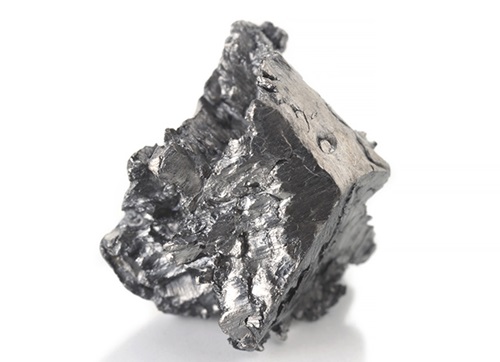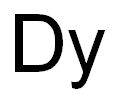What are the Main Uses of Dysprosium?
Dysprosium reacts with a variety of nonmetals at high temperatures to form binary compounds with varying composition and oxidation states +3 and sometimes +2, such as DyN, DyP, DyH2, and DyH3; DyS, DyS2, Dy2S3, and Dy5S7; DyB2, DyB4, DyB6, and DyB12, as well as Dy3C and Dy2C3. Dysprosium carbonate, Dy2(CO3)3, and dysprosium sulfate, Dy2(SO4)3, result from similar reactions. The majority of dysprosium compounds are soluble in water; however dysprosium carbonate tetrahydrate (Dy2(CO3)3·4H2O) and dysprosium oxalate decahydrate (Dy2(C2O4)3·10H2O) are both insoluble in water.

Uses of Dysprosium
Dy(Dysprosium) is used, in combination with V and other elements, in producing laser materials and commercial lighting. Due to its high thermal-neutron absorption cross-section, Dy-oxide-Ni cermets (a composite material composed of ceramic(cer) and metal (met) materials) are employed in neutron-absorbing control rods in nuclear reactors. Dy-Cd chalcogenides form sources of infrared radiation, which is suitable for the research of chemical reactions.
Since Dy and its compounds are highly susceptible to magnetization, they are used in many data storage applications, such as in hard disks. Dy is more and more sought-after for the permanent magnets used in electric car motors and wind turbine generators. Nd-Fe-B magnets can have up to 6% of the Nd replaced by Dy to increase the coercivity for demanding applications (in electrical engineering and materials science, the coercivity, also called the magnetic coercivity, coercive field, or coercive force, is a measure of the ability of a ferromagnetic material to withstand an external magnetic field without becoming demagnetized), such as drive motors for electric vehicles and generators for wind turbines. This substitution would require up to 100 g of Dy per electric car produced. This may rapidly exhaust its available supply in the near future. The Dy substitution may similarly be valuable in other applications as it enhances the corrosion resistance of the magnets.
Dy is one of the elements of Terfenol-D, along with Fe and Tb (an alloy of the formula TbxDy12xFe2 (xB0.3), is a magnetostrictive material. It was initially developed in the 1970s by the Naval Ordnance Laboratory (NOL) in the United States. The technology for manufacturing the material efficiently was developed in the 1980s at Ames Laboratory under a US Navy funded program. It is named after terbium (Ter), iron (Fe), NOL, and the D comes from dysprosium.) Terfenol-D has the highest room-temperature magnetostriction of any known material, which is employed in transducers, wide-band mechanical resonators, and high-precision liquidfuel injectors.


